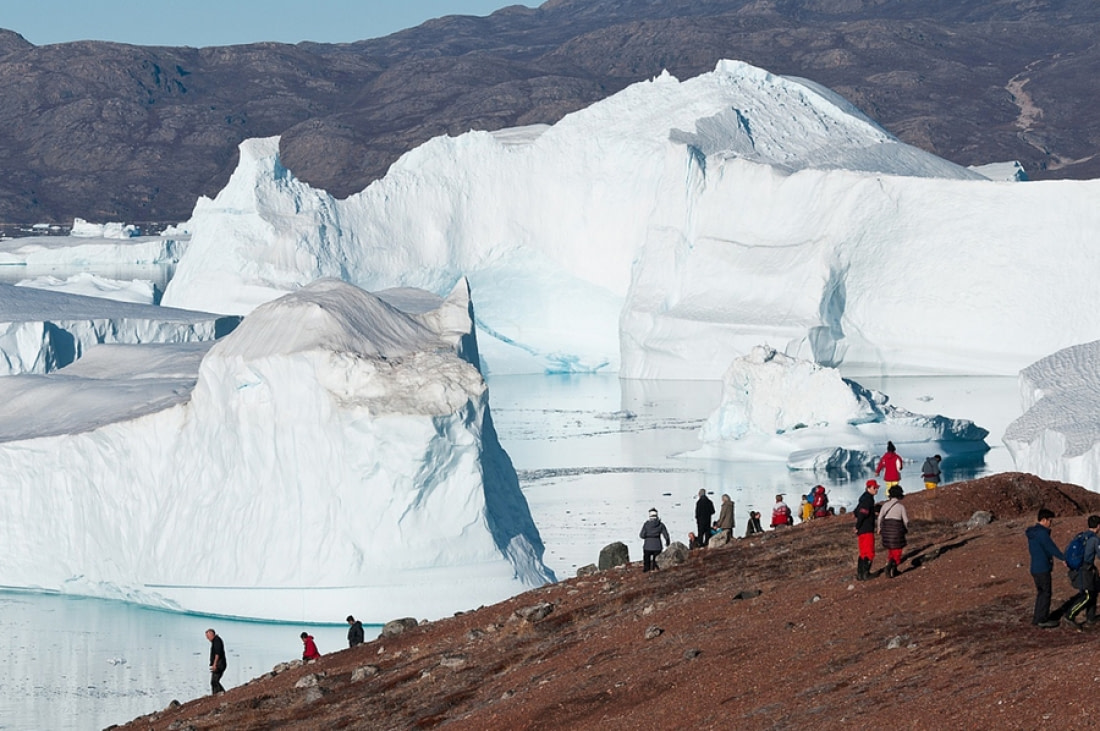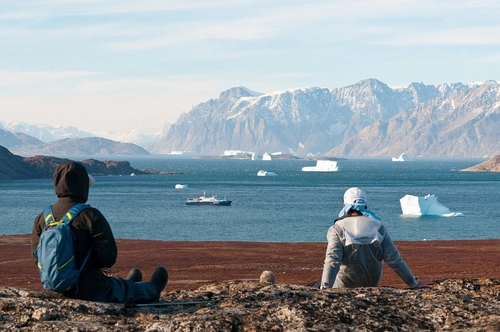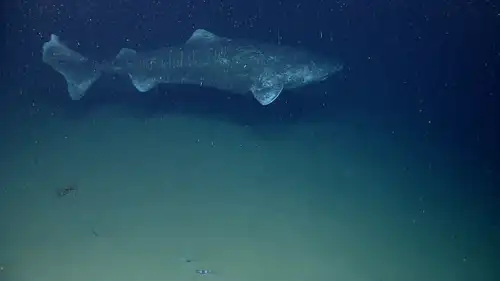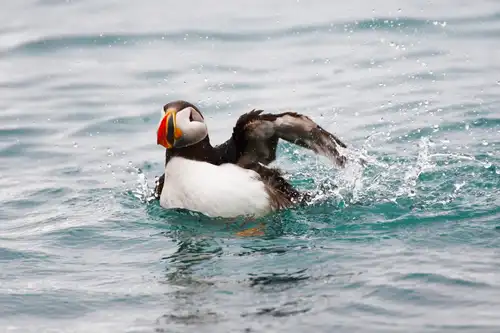Fjords are often linked with Norway, but they are not exclusive to that region. They are a common feature of the Arctic and are major attractions in Greenland and Svalbard.
Many Arctic fjords boast rich ecosystems, making them prime locations for observing whales, land mammals, and various seabirds. Here, we highlight some of our favorite Arctic fjords in Svalbard and East Greenland.

Svalbard fjords
Most Arctic travelers head to Svalbard for its main island, Spitsbergen, which is arguably the best place to see polar bears. However, the fjords of this region, especially those in Spitsbergen, are equally impressive. Below are a few of our favorites.

Raudfjorden
Located on the northern coast of Spitsbergen, Raudfjorden is perfect for glacier viewing. It is also a popular spot for bearded seals, ringed seals, Arctic seabird colonies, and occasionally, polar bears or belugas.
Raudfjorden stretches about 20 km (12.4 miles) long and five km (three miles) wide, situated between Albert I Land and Haakon VII Land. This fjord is a frequent stop on our Svalbard trips.

Krossfjorden
Characterized by green slopes, colorful flowers (seasonally), and a large glacier, Krossfjorden is a stunning Arctic fjord. It is home to flocks of kittiwakes and Brünnich’s guillemots, as well as Arctic foxes and bearded seals. Krossfjorden is about 30 km (48 miles) long and was the site of Spitsbergen’s first whaling station in the early 17th century.

Liefdefjorden
Liefdefjorden is a highlight of our Spitsbergen cruises, mainly because it runs alongside the impressive five-km-long (three miles) Monaco Glacier. The waters near the glacier are a rich feeding ground for thousands of kittiwakes, and polar bears can sometimes be seen hunting at the glacier’s base.

Bell Sund
Bell Sund is one of the largest fjord systems in Svalbard, featuring lush vegetation that supports local wildlife and historical sites. Beluga skeletons can be found around Ahlstrandhalvøya, remnants of 19th-century whale hunting.
Fortunately, not all belugas were wiped out, so you may still spot a pod. Exploring the side fjords of Bell Sund, you’ll see tundra where reindeer graze and rocky slopes where little auks nest.

Greenland fjords
Greenland boasts some of the most spectacular fjords in the Northern Hemisphere, with waterways so vast they can make you feel like you’re in a prehistoric world. This is especially true of East Greenland, the only area we explore.

Røde Fjord
Røde Fjord is a prized site on our Greenland voyages, featuring musk oxen and vibrant autumn foliage. The fjord is home to colossal icebergs, some over 100 meters (328 feet) high. Most icebergs here are grounded, as the fjord is only about 400 meters deep (1,312 feet), five km (three miles) long, and 11 km (6.8 miles) wide. Røde Fjord is part of the extensive Scoresby Sund fjord system.

Rømer Fjord
Rømer Fjord offers one of the best chances to see polar bears in Greenland, a species not often spotted on the island. Located on Turner Ø, this fjord is rugged and mountainous.
Kaiser Franz Joseph Fjord
Kaiser Franz Joseph Fjord extends about 100 km (62 miles) into Greenland’s interior, branching in multiple directions for roughly another 92 km (57 miles) from its mouth in Foster Bay.
This fjord is known for its spilling glacier tongues and towering, sheer-sloped surroundings. Be sure to bring a good camera and plenty of memory cards.

Kong Oscar Fjord
South of Kaiser Franz Joseph Fjord lies Kong Oscar Fjord, forming the northern border of the Scoresby Land Peninsula. This fjord is a frequent sight during our Greenland trips, branching into numerous smaller fjords on its western side. Kong Oscar Fjord is about 10 – 25 km (16 – 40 miles) wide.

Nordvestfjord
Part of the Scoresby Sund system, the picturesque Nordvestfjord is fed by the Daugaard-Jensen Glacier, among others. This glacier produces most of the icebergs north of Iceland, many of which pass through Nordvestfjord.

Scoresby Sund
No discussion of Arctic fjords is complete without mentioning Scoresby Sund, the largest fjord system on Earth.
Scoresby Sund is immense, with a main body about 110 km (68 miles) long and an area of extending fjords covering approximately 38,000 square km (14,700 square miles). It reaches 350 km (216 miles) inland, with depths plunging to 1,450 meters (4,760 feet) in some areas.
Scoresby Sund is a prime location for observing Arctic wildlife, enjoying the northern lights, and visiting the Inuit village of Ittoqqortoormiit, the only permanent settlement in the region.
In summary, if you visit only one fjord in the Arctic, make it the Scoresby Sund fjord system in Greenland.






Related Trips
Blog



Polar Bear Primer: Eight Facts About the Arctic Wanderer

Tracking Greenland’s Wildlife from Space

Science of the Ross Ice Shelf

Spitsbergen: Alkefjellet magic

10 Terrific Antarctic Bird Facts

Top 10 Tips for Packing Your Polar Photography Equipment

9 Facts about the Greenland Shark

Polar Cuisine in Pictures

The Ultimate Traveler’s Guide to the Arctic and Antarctica

Highlights from the First Arctic Voyage of Hondius

Greenlandic Inuit Beliefs

Kayaking In Greenland

Light in the Land of the Midnight Sun

Northeast Greenland National Park

Polar Bear Sets Impressive New Diving Record

Going Green: Ascension Island Sea Turtles

Puffins: Clown Birds of the Atlantic

Book Recommendations for Your Polar Cruise

Harp seals harping on in Greenland






 20 Days / 19 Nights
20 Days / 19 Nights

